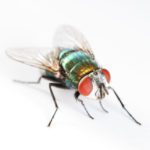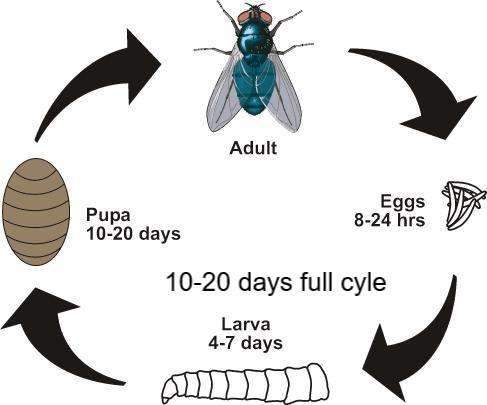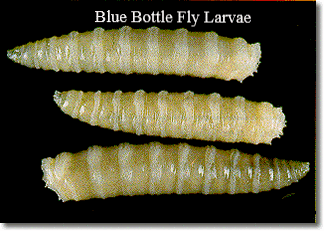Updated 8/12, 12/20/21
There are 19,600 fly species in the US*. Each has very unique differences, but the one I’d like to focus on is the bluebottle fly and the dead truth about why they might be in your house. Summer, Spring and Fall-keep these pests, out!
This is a bluebottle fly
All flies have either sponging/lapping or piercing/sucking mouth parts. The bluebottle fly falls into the “filth fly” category. This type of fly has a sponge-like mouth part to suck up the decomposing liquid that its stomach acids produce when it comes into contact with the organic things it lands on. GROSS!!!
The Bluebottle Fly and Disease Transmission.
With the increasing use of outdoor vendors and restaurants and outdoor grilling, just imagine the fly’s last resting spot before it lands on your hot dog. For example, pet owners who do not clean up the feces from their back yard, then proceed to have a cookout are just asking for some type of bacterial encounter.
Pathogens carried by these flies include:
- typhoid
- e.coli
- dysentery
- anthrax
- tuberculosis
- Staphylococcus (staph.)
- Streptococcus (strep.) and many others.
Bottle Fly Facts
- Colors include: blue, gold, green, bronze, black/bluish, all with a metallic sheen, or iridescence.
- About the same size as the house fly maybe a little bit bigger and more robust.
- Dog feces are a very common breeding medium.
- Bluebottle flies will always be found around any dead body; as small as a mouse on up to other larger deceased bodies.
- Dead animals in chimneys will often cause the larva of this fly type to drop down into the fireplace, pupate and then infest the inside of a house.
- Maggots are the most obvious sign of any fly infestation. They are often found in decaying food or in any type of rotting organic matter.
This is what bluebottle fly maggots look like:
How to get rid of flies in or around your house?
Any fly situation has to be ultimately controlled by finding the breeding source and cleaning it up or eliminating it. The source is the key! Most of these flies do not live that long but can turn a generation in a relatively short period of time. It only takes about 10 days for a complete life cycle generation, then they’re ready to mate again.
If you have flies sunning themselves on the side of your house or you keep seeing them appear and buzz around your windows on the inside, you know you have to start looking for something dead. It sounds morbid, but perhaps there’s a dead mouse in your basement window well or a dead bird in your chimney. See if you can trace their flight pattern back to their breeding site and source.
We’re always here for you!
Our Healthy Home Maintenance Program (HHMP) involves four scheduled visits, once every three months, and covers more than 12 common invaders in addition to flies. We stand by our services and their 24/7/365 protection 100%, so we’ll take care of issues that pop up in between scheduled visits at absolutely no cost to you. That’s right, we’ll come back out for free.
Give us a call today at 800-GOT-PESTS? to set something up so you can get back to enjoying your home without pests.




